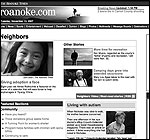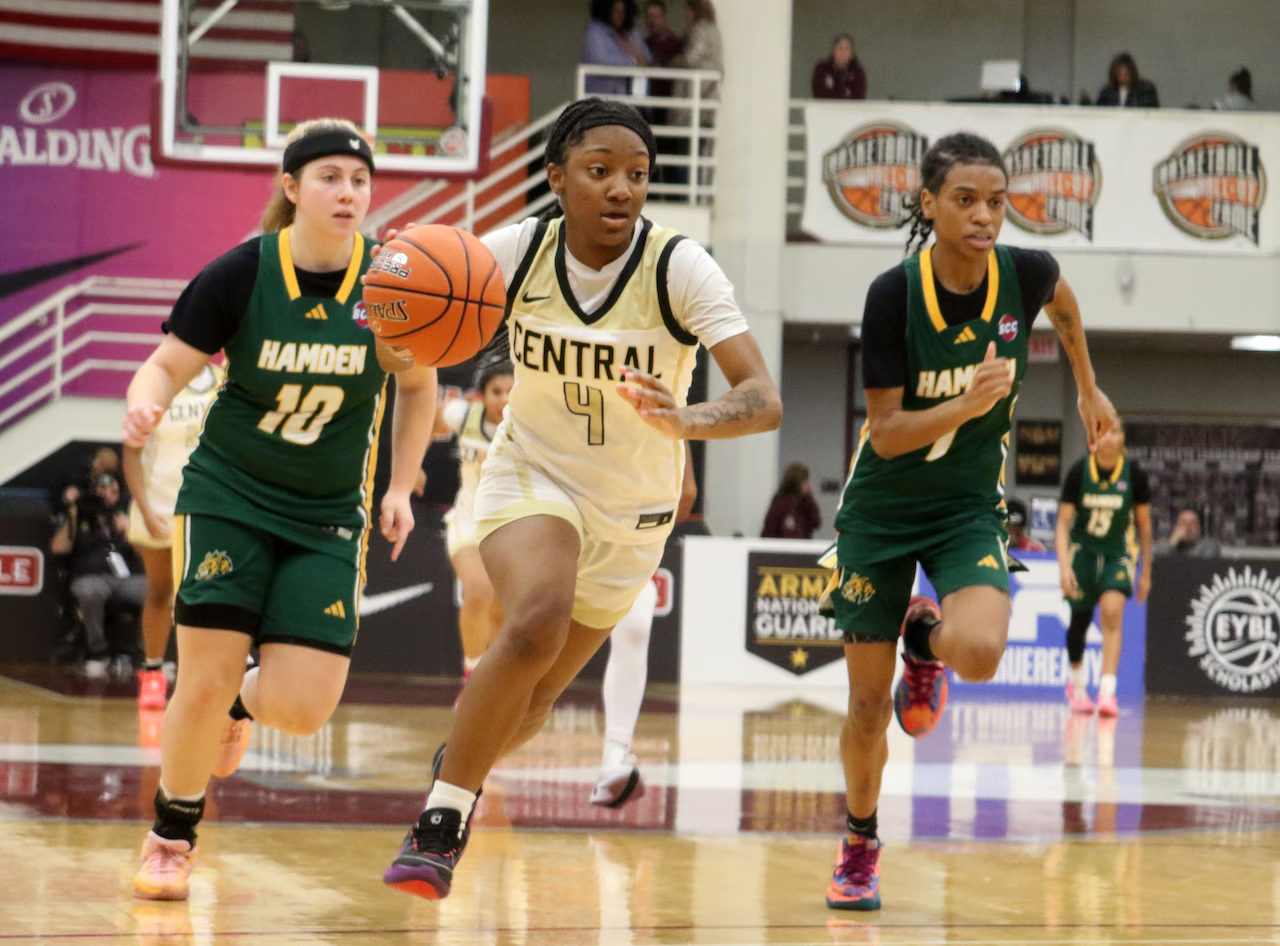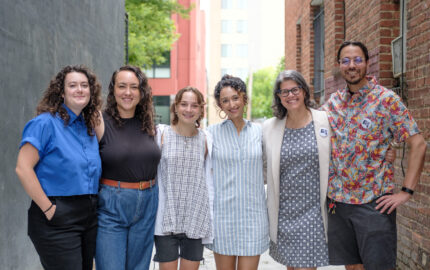
Story assignment No. 1: A handful of residents are upset that a company wants to build a concrete-mixing plant near their homes. They fear the plant will be noisy and lower their property values.
Then there is story assignment No. 2: As a government crackdown in Myanmar makes international headlines, refugees from that country—formerly known as Burma—arrive at a Virginia immigration services office. The refugees have compelling stories to tell about torture and their flight from a brutal, authoritarian regime.
Both of these stories are valuable to the 94,000 subscribing readers of The Roanoke (Va.) Times, the daily newspaper I serve as editor. But which one would the typical print reporter lunge for, and which would she avoid by diving under her desk as her editor approaches?
In the answer, you’ll also find the root of the problem in the Times newsroom and many others of a certain size.
Our ambitions as journalists sometimes don’t align with our readers’ appetite for local, local, local. Its most harsh expression can be heard when a reporter complains, “I didn’t go to j-school for this.”
But a young journalist I know sees the issue more subtly. Her first job out of college was writing for a weekly suburban paper outside Washington, D.C.. She found herself covering the comings and goings of this community—church news, student achievements, and club fundraisers—without a whole lot of gusto. She didn’t look down on such news. Single, renting, with no kids and new to the area, she just didn’t feel connected to it. “I felt like a fraud,” she told me.
The ‘Zoned’ Reporter
Fifteen years ago, I was in the same boat. Newly married, renting, with no kids or longtime ties to the area, I was stationed in a suburban bureau of a Florida metro paper, The Tampa Tribune. I say “stationed” because the bureau was very much the frontlines in an old-fashioned newspaper war, The Tampa Tribune vs. the St. Petersburg Times.
In the late 1980’s, the Tribune fended off an assault from St. Pete by zoning the heck out of its home base, the city of Tampa and Hillsborough County. That meant we—the frontline soldiers—churned out five (later growing to eight) daily zoned broadsheet editions, publications that supplemented a separate state/metro section. In theory, the zones blanketed the market with neighborhood-level coverage, leaving readers wanting for nothing in local news. In truth, the coverage had its highs and lows. One reason was geography: If you were reporting from the suburban bureaus closest to Tampa, news—the kind that appealed to the ambitious j-schoolers—was easy to come by. Crime reporting alone kept those bureaus humming.
Reporting from rural bureaus farther out—30 and 40 miles from downtown—was more problematic. Flat scrublands dotted with cattle, palms and palmettos dominated the landscape. We, the foot soldiers, attended countless county commission hearings discussing the development plans for this land. We dutifully covered the meetings, filling the zoned editions with an abundance of 15-inch stories. We documented every bureaucratic step and related Sierra Club snit over subdivisions and strip malls planned for five and 10 years hence.
Doing this kind of coverage especially pained one young reporter, who expressed his distaste by creating an award for what he considered especially insignificant copy. He named it the MEGO (My Eyes Glazed Over) award and took the time to tack the offending clips to a bureau corkboard.
This reporter worked in a city bureau, the one closest to the Tribune’s downtown office overlooking the Hills-borough River. Working “downtown” was his goal, as it was for nearly every bureau reporter of that era. Getting promoted to downtown meant you’d hit the big time. Downtown meant you’d escaped the world of PTA cookie sales, puppet shows at the library and, most painful of all, Rotary Club meetings.
The Disconnected Reporter
This was the other reason for the lackluster coverage, the essential truth that dogs such coverage at today’s metro newspapers. We either didn’t care about the communities we covered, or we tried to care and couldn’t because this was not our world. It did not quench our professional ambitions. We felt like frauds.
The young journalist who confessed her fraudulent feelings to me recently did so at a meeting called to reassess our own zoned coverage in Roanoke. We’re beginning this process with some optimism, a condition rarely exhibited in this time of shrinking newspapers. We have vowed to learn from the past and to view competition far more broadly than a competing daily (which this market hasn’t seen since the mid-1970’s).
The competition is online, of course—but not solely. That’s why Dwayne Yancey, the person steering this reexamination, carries a new title, senior editor for new channels.
What exactly is a new channel? It’s an Internet database we develop on high school football. It’s a text-message weather alert, an entertainment Webcast, or a niched print—yes, even print—publication. This time, the battle for community readership has many frontlines. That’s why some of us in the newsroom trade half-joking messages of “Incoming!” when another new local Web site or niched publication pops up.
We’re plenty aware of the need to change. The next phase is acting on what we know, which brings me full circle to:
- Story No. 1: The concrete plant controversy and potential MEGO award winner.
- Story No. 2: The Myanmar refugees story and potential journalism award winner.
How do we resolve the tensions we all know exist between what the news organization needs and the ambitions of those who will be sent out on the frontlines?
Here’s an example of how we are trying to do this. We begin by recognizing the Myanmar story is a gift to an enterprising reporter—the kind that, if done well, would get one noticed by downtown editors. But we also emphasize that it’s intensely local.
Beth Macy, the reporter who covered this story for us, approached the assignment as both a local and global story. She explained the political history of Myanmar/Burma but also worked in only-in-Roanoke details that were especially relevant to our community. She focused on a suburban Roanoke homemaker who’d fled Burma in the 1960’s and recently found her translation skills in high demand.
Macy took the same global-local approach with a 2006 series, “Land of Opportunity,” in which she told several tales of immigrant journeys that all ended in a familiar destination, Roanoke.
What’s News? Who Reports It?
Seeing the promise in such stories is relatively easy compared to the other task, the one that involves a reassessment of what we consider “news.” Put another way, how do we make a concrete plant controversy compelling journalism? Will homeowning editors remain in the position of preaching to renting reporters why this story is so important—reminding them that it’s all about a threat to hearth and home equity?
Or do we turn to our readers to “report” such things? And do we fill our Web and print pages with what they appreciate but what we are sometimes loathe to gather—the “user-generated” pet photos, Little League scores, and dispatches from neighborhood block meetings?
I warily watch such experiments at other newspapers, warily because of this one fact: Readers live busy lives, especially those with family obligations. Between their jobs and kids’ soccer practices, most can scarcely eat a dinnertime meal together, let alone accurately report the fundraising shortfall for a neighborhood playground. I can all but hear them asking, “Isn’t this what we pay you to do?”
Every reader survey I’ve seen ranks investigative reporting as a high priority. From inside the newsroom, we feel pulled in two ways—how do we maintain our highest level of public service journalism and keep our eyes focused on the many details of our community’s life?
In his role as the seeker of “new channels,” Yancey has been consulting the small-newspaper division of our parent company as we look anew at our zoned editions. By and large, these small weeklies and biweeklies are healthy and lovingly appreciated by readers. What is their secret for remaining vibrant in an age when readers are peeling off from the Pulitzer-winning papers covering many sprawling metro areas?
So far, these conversations have produced one valuable nugget of advice, something we can act on and see promise in: Hire local. Look for part-timers or flex-timers who want to do a little writing on the side or in between things. Above all, seek out those who are well connected in the community through their family, friends and activities.
RELATED WEB LINKS
Macy's story on Burmese immigrants
Macy's immigration series
– roanoke.com/ Yet already we, the professional journalists, can’t help ourselves. Already we are talking about the ambitions we have for them. We’ll train them. We’ll invite them to an in-house journalism boot camp where they’ll learn how to write and report and abide by our ethical standards. A wise editor friend has done this before, with success. “Invest in them and they’ll invest in you,” he says.
That’s where we stand in the fall of 2007—exploring new channels and recalibrating our budgets and outlook on journalism. The young journalist who fled D.C. is back home, working as a journalist in Roanoke. The young reporter who invented that MEGO award eventually went to work in downtown Tampa. From there he landed his dream job—at a big city, but now very ailing, West Coast newspaper.
Carole Tarrant is editor of The Roanoke Times in Roanoke, Virginia.




